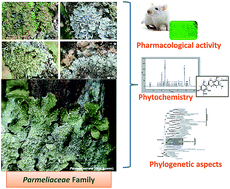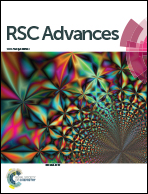Parmeliaceae family: phytochemistry, pharmacological potential and phylogenetic features
Abstract
Parmeliaceae is the largest family of lichenized fungi comprising about 2700 species distributed in about 80 genera. A wide array of secondary metabolites including depsides, depsidones, aliphatic acids, triterpenes, anthraquinones, secalonic acids, pulvinic acid derivatives and xanthones have been identified within this family. Many of these bioactive compounds such as usnic acid and atranorin are exclusively found in this family, being of great relevance for the systematics and phylogeny. Moreover, these compounds exert different biological roles including antimicrobial, antioxidant, cytotoxic, anti-inflammatory, analgesic and enzyme inhibitory actions. The current review focuses on the phytochemistry and main phylogenetic aspects of Parmeliaceae, and it discusses the pharmacological findings and mechanisms of action of their extracts and isolated compounds. The present work actually collects information related to more than 65 lichen species (from 21 different genuses and heterogeneous distribution) and 75 isolated metabolites. As reported, the best studied genus from a pharmacological point of view is Parmelia, followed by Usnea. At the species level, Cetraria islandica and Evernia prunastri attract remarkable interest in their bioactive activities and metabolite content. The major pharmacological activities investigated on extracts and compounds from Parmeliaceae spp. have been antimicrobial, anticancer and antioxidant potentials; and regarding isolated compounds, the aforementioned usnic acid and atranorin are among the most studied metabolites. Reviewed data suggest that some of these lichens and natural compounds are worthy of further investigation.


 Please wait while we load your content...
Please wait while we load your content...